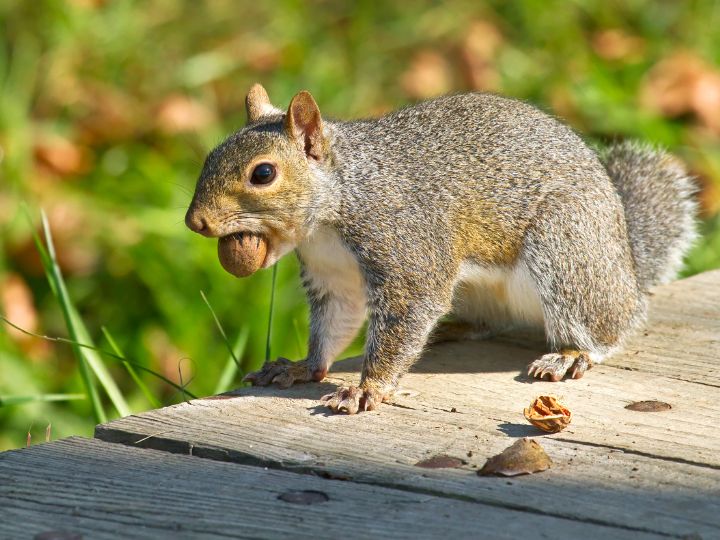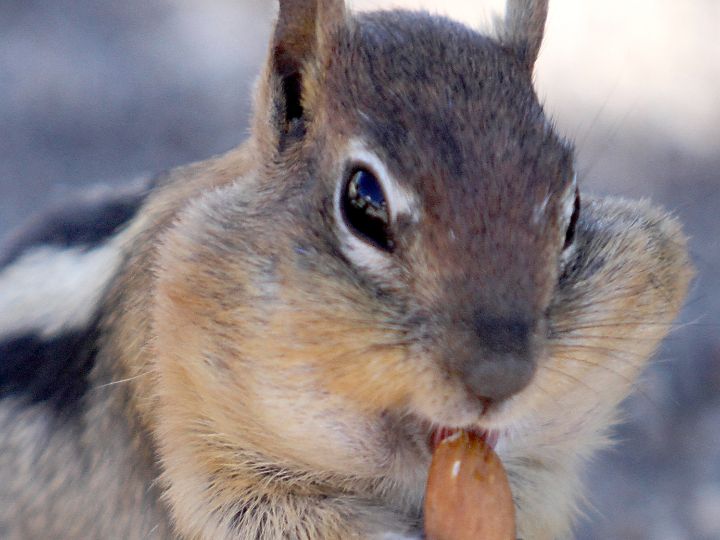Squirrels are perhaps the most well-known pecan consumers, feasting on a wide range of nuts such as hazelnuts, walnuts, acorns, and, of course, pecans. However, squirrels are not alone in their love for pecans. Other animals like raccoons, possums, mice, hogs, and even cows are known to enjoy these delectable treats when available. These animals are attracted to the rich flavor and abundance of nutrients found within the pecan’s hard shell, often going to great lengths to crack them open and access the tasty nutmeat inside.
In addition to mammals, some birds also incorporate pecans into their diets, including woodpeckers and various other nut-loving species. As we continue this exploration, readers will gain fascinating insights into the relationships between pecans and the diverse array of creatures that seek them out as a critical food source.

Pecans are not only a delicious and nutritious snack enjoyed by humans, but they also serve as a food source for various animals. As a staple in many ecosystems, these tasty nuts have a significant impact on the diets of numerous species. In this article, we will explore the diverse group of animals that rely on pecans as a part of their regular sustenance.
Mammals That Eat Pecans
Squirrels
Squirrels are among the most common animals known to consume pecans. They have a strong affinity for nuts, including hazelnuts and acorns, and are particularly fond of pecans due to the ease with which they can break open the kernel and access the nut inside. Squirrels play an essential role in spreading pecan seeds, helping to expand the trees’ distribution and bolster genetic diversity within forest ecosystems.

Chipmunks
Like squirrels, chipmunks are also attracted to pecans. These small mammals have a diet primarily consisting of seeds, fruits, and nuts. Pecans provide essential nutrients, such as fats and proteins, vital for chipmunks’ energy needs, especially in preparation for winter hibernation. Chipmunks contribute to the distribution of pecan seeds, improving the trees’ growth and expansion.

Raccoons
Raccoons are opportunistic feeders that eat a wide variety of foods, including nuts. They have been known to consume pecans, especially when other food sources are scarce. Raccoons are dexterous and can easily handle pecan nuts, breaking them open to access the nutritional content within. In addition to spreading pecan seeds, raccoons also help maintain a balanced ecosystem by controlling rodent populations.
Deer
Deer are another mammal that feeds on pecans. While their diet is predominantly herbivorous, they occasionally seek out high energy food items like nuts to complement their diet. Pecans offer a good source of essential nutrients for deer, especially during fall and winter when other food sources may be limited. Deer contribute to the spread of pecan seeds within their habitat, thus helping to maintain the health and diversity of the forest ecosystem.
Birds That Eat Pecans
Pecans are a popular nut enjoyed by various bird species. In this section, we will discuss three bird species that are known to consume pecans: Blue Jays, Crows, and Woodpeckers.
Blue Jays
Blue Jays (Cyanocitta cristata) are a well-known bird species that appreciate a wide variety of nuts, including pecans. They have a strong beak that allows them to crack open the hard shells of pecans and access the nutritious nutmeat inside. Blue Jays are known to be particularly fond of nuts like pecans, acorns, and peanuts, which they cache to enjoy later. In addition to being a valuable and nutritious food source, pecans are critical for Blue Jays’ survival during the winter months when their primary food sources are scarce.
Crows
Crows (Corvus) are another bird species that enjoy consuming pecans. These intelligent and adaptable birds are known to eat a wide range of foods, including nuts, seeds, insects, and small animals. Crows have powerful and sturdy beaks that can crack open pecan shells to access the nutmeat. The consumption of pecans provides crows with essential nutrients and energy needed for their survival. Pecans are particularly important for crows during the winter months, as their preferred food resources shrink.
Woodpeckers
Among the various types of woodpeckers, some species, including the Red-bellied Woodpecker (Melanerpes carolinus) and the Red-headed Woodpecker (Melanerpes erythrocephalus), are known to eat pecans. Woodpeckers use their sharp beaks to chisel through tree bark, searching for insects and larvae. However, they also consume nuts, including pecans, as a part of their diverse diet. Woodpeckers benefit from the numerous nutrients and energy that pecans offer, which help them thrive in their habitats.

Insects That Eat Pecans
Pecan Weevils
Pecan weevils are significant pests that can damage pecan nuts. The female adult weevil punctures the nuts in the summer and lays eggs inside. When the larvae hatch, they consume the developing nut, which can lead to significant losses in production. In August, adult weevils begin to emerge from the soil and feed on nuts in the water stage, causing them to drop. This damage caused by pecan weevils can vary greatly within orchards and can be localized to specific areas.
To prevent pecan weevil infestations, it is essential to closely monitor your pecan trees and to implement proper pest management practices. These may include trapping, using chemical controls, or engaging in cultural practices that can discourage the weevils from attacking the pecan nuts.
Hickory Shuckworms
Another pest that can feed on pecan nuts is the hickory shuckworm. The larvae of these insects tunnel into the shuck of the nut, interrupting the flow of nutrients and water needed for the kernels to develop normally. As a result, infested nuts may be scarred, mature more slowly, and are usually of poor quality. The hickory shuckworm can cause notable damage, reducing the overall quality and yield of pecan nuts.
To combat hickory shuckworms, it is crucial to maintain proper tree health and employ pest management strategies, such as using chemical controls, biological controls, or cultural practices that can help reduce the likelihood of infestation. Regularly inspecting the pecan trees and keeping a vigilant eye on any signs of hickory shuckworm presence can also aid in early detection and timely intervention.
Frequently Asked Questions
Becky is a fervent wildlife enthusiast and pet care expert with a diploma in canine nutrition. Her love for animals stretches beyond the domestic, embracing the wild tapestry of global fauna. With over a decade of experience in animal welfare, Becky lends her expertise to OutlandishOwl through insightful articles, captivating wildlife information, and invaluable guidance on pet nutrition. Her work embodies a deep commitment to understanding the intricate lives of animals and a passion for educating others on sustaining natural habitats. Becky's hands-on conservation efforts and her knack for translating complex dietary science into practical pet feeding tips make her an indispensable voice for creatures great and small.



